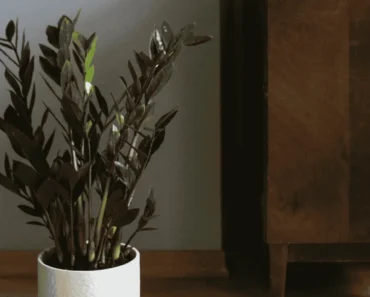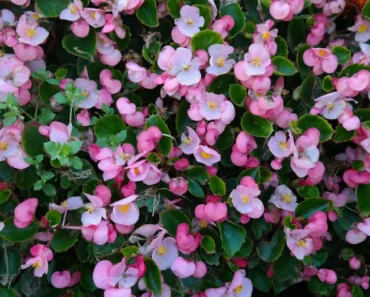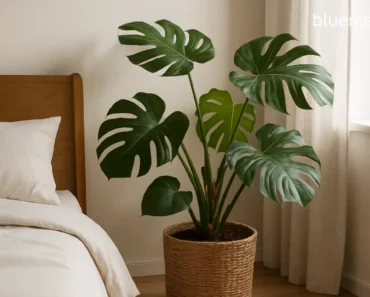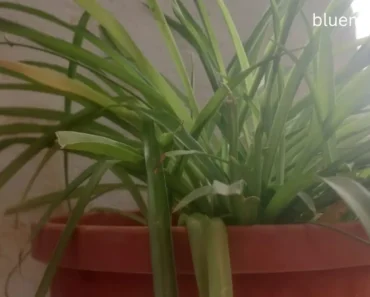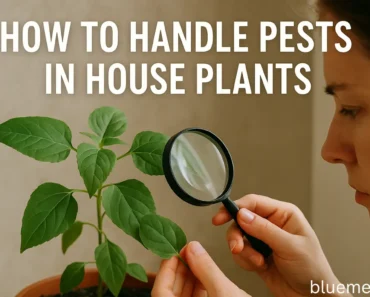Table of Contents
Key Takeaways:
- Light is the single biggest factor in plant health—even more than watering.
- Most plant deaths happen because they’re in the wrong spot at home—not from neglect or overwatering.
- You can turn any space into a plant paradise with the right lighting knowledge
- Understanding your home’s “light map” will save you money and heartbreak
- A small change in where you place a plant can revive it and boost its growth.
When I started out, I obsessed over soil, watering, and fertilizer. Yet my plants still struggled—some grew leggy and pale, others developed brown edges, many slowly declined no matter what.
It wasn’t until I learned about light that things truly changed. Knowing your plants’ light needs isn’t optional—it’s essential for their growth.
The Foundation of Plant Success: Why Light Matters More Than You Think
Light is the driving force behind photosynthesis—the process that keeps your plants alive and thriving. But here’s what most people don’t realize: different plants have evolved to thrive in completely different lighting conditions, and understanding these requirements is the key to plant parenting success.
I used to be a serial plant killer. My apartment looked like a plant graveyard, with sad, leggy specimens reaching desperately toward whatever light they could find. I’d blame myself, the plant, even the weather. Then one day, my friend Sarah (who somehow keeps a jungle alive in a basement apartment) came over and said four words that changed my plant game forever:
“It’s all about light.”
She walked around my apartment with the intensity of a detective, pointing out things I’d never noticed. “This corner gets maybe two hours of indirect light.” “That window faces north—perfect for your snake plant, terrible for the succulent you killed there.” “This spot by the kitchen window? Plant paradise.”
I realized my mistake: choosing plants for looks and forcing them to fit my space, without considering their need for the right light.
What Your Plants Are Really Trying to Tell You
Before we dive into solutions, let’s talk about what your plants are actually saying when they start looking sad. Because yes, they’re definitely trying to communicate with you—you just need to learn their language.
The “I’m Not Getting Enough Light” Signs:
- Leaves turning pale or yellowish (especially from the bottom up)
- New growth coming in smaller than older leaves
- Your plant literally leaning toward the nearest window like it’s reaching for help
- Stems getting leggy and stretched out
- Flowering plants refusing to bloom
The “I’m Getting Too Much Light” Signs:
- Leaves developing brown, crispy edges or spots
- Colors washing out or looking bleached
- Leaves curling up or developing a “sunburned” appearance
- Growth slowing down despite otherwise good care
I thought my plants were being dramatic, but they were just giving me feedback—I wasn’t listening.
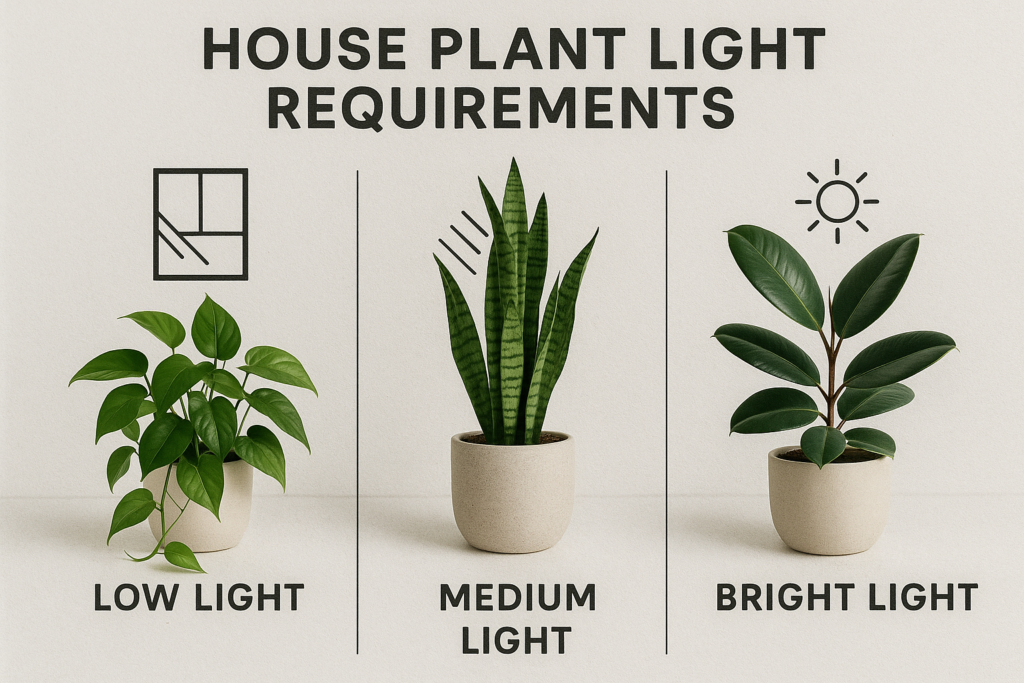
Decoding Your Home’s Light Personality
Every home has its own lighting personality. Understanding yours is your shortcut to plant success. All you need are your eyes and maybe a free phone app.
The Great Light Audit
Spend a day noticing how light moves through your home. Set a few phone reminders and take notes—you’ll be surprised by what you find.
Morning light is gentle and indirect—perfect for plants that like bright conditions without the intensity. That east-facing window that seems dark by afternoon? It might be prime real estate for your peace lily.
Afternoon light is the heavyweight champion—intense and often harsh. South and west-facing windows get this treatment. Great for your cacti and succulents, potentially deadly for your ferns.
Northern exposure gets steady, indirect light all day. It’s like the plant equivalent of a cloudy day—consistent but never overwhelming. Perfect for those “bright, indirect light” plants that seem to be everywhere these days.
The Phone Test
Try this: Can you comfortably read a book in natural light here? That’s moderate to bright light. Need to squint or get sunglasses? It’s low or intense light.
Your plants experience light the same way you do—they just can’t move away when it’s uncomfortable.
Matching Plants to Their Happy Places
Once you grasp your home’s light, choosing plants gets much easier. Shop with confidence!
Low Light Champions (Your North-Facing Window Heroes)
These are the plants that actually prefer the back row. They’re not settling for less light—they’re thriving in it.
Snake plants are basically the introverts of the plant world. They’re perfectly happy in that corner that barely gets any light. I have one that’s been in the same low-light spot for three years, and it’s honestly the most reliable plant I own.
Pothos are like the golden retrievers of houseplants—adaptable and happy almost anywhere. They’ll grow in low light, though they might lose some of their variegation. Small price to pay for a nearly indestructible plant.
ZZ plants are so tolerant of low light that I sometimes forget they’re there. Which is exactly what they prefer.
Bright, Indirect Light Lovers (The Goldilocks Zone)
These plants want light that’s “just right”—bright enough to photosynthesize efficiently, indirect enough not to get crispy.
Fiddle leaf figs (yes, the Instagram famous ones) actually do well when you get their lighting right. A few feet back from a bright window, or near a window with sheer curtains. They’re drama queens, but they’re consistent drama queens.
Monstera deliciosa will reward perfect lighting with those gorgeous split leaves. Too little light, and the new leaves stay small and solid. Too much, and you’ll get brown spots.
Direct Light Worshippers (Your South Window Superstars)
These plants want all the sun you can give them. They’re basically solar panels with roots.
Succulents and cacti are obvious choices, but here’s what surprised me: many of them actually prefer morning sun over afternoon sun. That intense afternoon light can be too much even for desert dwellers.
Herbs generally love direct light. That sunny kitchen window isn’t just convenient for cooking—it’s perfect for growing your own basil and rosemary.
When Nature Needs a Little Help: Artificial Lighting That Actually Works
Let’s be honest—not all of us live in houses with perfect natural light. Some of us have apartments with windows that face brick walls or live in places where winter means three months of gray skies. That’s where grow lights come in, and they’ve gotten so much better (and more affordable) than they used to be.
The LED Revolution
Forget those purple-pink grow lights that make your home look like a marijuana dispensary. Modern LED grow lights come in full spectrum white light that looks completely normal to human eyes while giving your plants everything they need.
I started with a simple LED grow light bulb that screws into any regular lamp. Cost me about $15, and suddenly that dark corner of my bedroom became prime plant real estate. You can literally put it in a regular desk lamp and transform any space.
Strategic Placement Tips
Here’s what I learned the hard way: distance matters more than you think. Too close, and you’ll fry your plants. Too far, and you might as well not bother. Most plants do well with grow lights positioned 12-18 inches away, but start farther and move closer if needed.
Plants need darkness. I use a timer for 12-14 hours of supplemental light daily.
The Mistakes That Make Me Cringe (And How to Avoid Them)
After years of plant parenting and helping friends troubleshoot their struggling plants, I’ve seen every mistake in the book. Here are the big ones:
The “Sunny Spot” Trap: Not all direct sun is good. I lost plants in a south window with intense sun—most houseplants naturally thrive with filtered, not desert, light.
The Seasonal Surprise: The perfect summer spot can become wrong in winter. Move plants as light changes with the season.
The “More Must Be Better” Mistake: Struggling plant? More isn’t always better. Sometimes less light (or water) is the cure.
The Artificial Light Overload: I overdid grow lights at first. Plants need darkness, too—too much light also stresses them.
Reading the Signs: Your Plant’s Daily Weather Report
Plants are constantly giving us feedback about their lighting situation. The trick is learning to read their signals before small problems become big ones.
New leaf color is your best early warning system. If new growth is coming in pale or yellowish compared to older leaves, that usually means not enough light. If new leaves are smaller than old ones, same issue.
Leaf direction tells a story too. Plants literally turn toward their light source. If your plant is doing a dramatic lean toward the window, it’s telling you it wants to be closer to the light.
Growth patterns are revealing. Lots of stem between leaves (what plant people call “leggy” growth) usually means your plant is stretching toward light that’s not quite adequate.
Creating Your Plant Paradise: Room by Room
Now that you understand the principles, let’s get practical. Here’s how to work with what you’ve got in each room:
Living Room Strategy
Living rooms often have the best windows, but they’re also where we want our showstopper plants. The key is creating layers of light. Put your high-light plants closest to windows, medium-light plants a few feet back, and low-light plants in corners or on side tables.
That big empty corner that seems perfect for a plant? It probably gets terrible light. But add a stylish floor lamp with a grow light bulb, and suddenly it’s prime real estate.
Bedroom Brilliance
Bedrooms often get overlooked for plants, but they can be perfect for low to moderate light plants. That dresser across from your window? Ideal for a snake plant or ZZ plant. Plus, they’ll clean your air while you sleep.
Kitchen Considerations
Kitchens usually have great windows, but they also have unique challenges—humidity from cooking, temperature changes, limited counter space. Herbs love kitchen windows, and hanging plants can make use of upper cabinet space near windows.
Bathroom Possibilities
If your bathroom has a window, it can be a plant paradise. The humidity from showers creates a mini tropical environment. Ferns and air plants absolutely thrive in bright, humid bathrooms.
Seasonal Shifts: Working with Nature’s Changes
Here’s something I wish I’d known earlier: your plant’s lighting needs change with the seasons, and so should their placement. That perfect spot in summer might become too dim in winter, and that gentle winter location might become too intense come summer.
In fall, I do a ‘light audit’ and move plants as needed. In spring, I shift them back as sunlight intensifies.
Winter adjustments often mean moving plants closer to windows or adding grow lights. The sun is lower in the sky, days are shorter, and even your brightest windows might not provide enough light.
Summer modifications might mean moving some plants away from windows that become too intense, or adding sheer curtains to diffuse harsh light.
The Bottom Line: Light Is Everything
After years of trial and error, I found most plant problems relate to light—too little light leads to overwatering and unhealthy plants.
The beautiful thing about understanding light is that it makes everything else easier. When your plants are getting the right amount of light, they’re more forgiving of watering mistakes, they grow faster, and they’re generally healthier and more resilient.
Your Plant Lighting Action Plan:
- This week: Do a light audit of your space. Note which areas get what kind of light throughout the day.
- This month: Match your current plants to their ideal lighting conditions. Don’t be afraid to move them around.
- This season: Consider adding grow lights to extend your plant possibilities into darker areas of your home.
- Going forward: Shop for plants based on your available light, not just what looks pretty at the store.
Remember, you don’t need a greenhouse or perfect windows to have thriving plants. You just need to understand what you’re working with and make smart choices based on that reality.
Ready to turn your home into a thriving plant paradise? Start today: spend just 24 hours observing the light in your space. Identify one underused spot and match it with a plant that fits the light. Take one small action now, and watch your confidence (and your plants) grow.
What’s your biggest plant lighting challenge? Comment below and let’s troubleshoot together. Share your question—get personalized advice and help fellow plant parents thrive!
Author
George Wine is a seasoned gardening expert with over 20 years of experience in the field of horticulture. His passion for plants and nature has driven his career, where he has honed his skills in various aspects of gardening, from landscape design to plant care. George holds a Master of Science in Horticulture from the University of California, Davis (UC Davis), a prestigious institution known for its research and advancements in plant science.
Throughout his career, George has worked with a diverse range of clients, offering tailored solutions to enhance outdoor spaces and create thriving gardens. His knowledge and expertise allow him to provide invaluable advice, ensuring that both novice and experienced gardeners achieve their gardening goals. Whether you’re looking for tips on sustainable gardening practices, innovative design ideas, or advice on specific plant species, George is here to help you cultivate the garden of your dreams.


